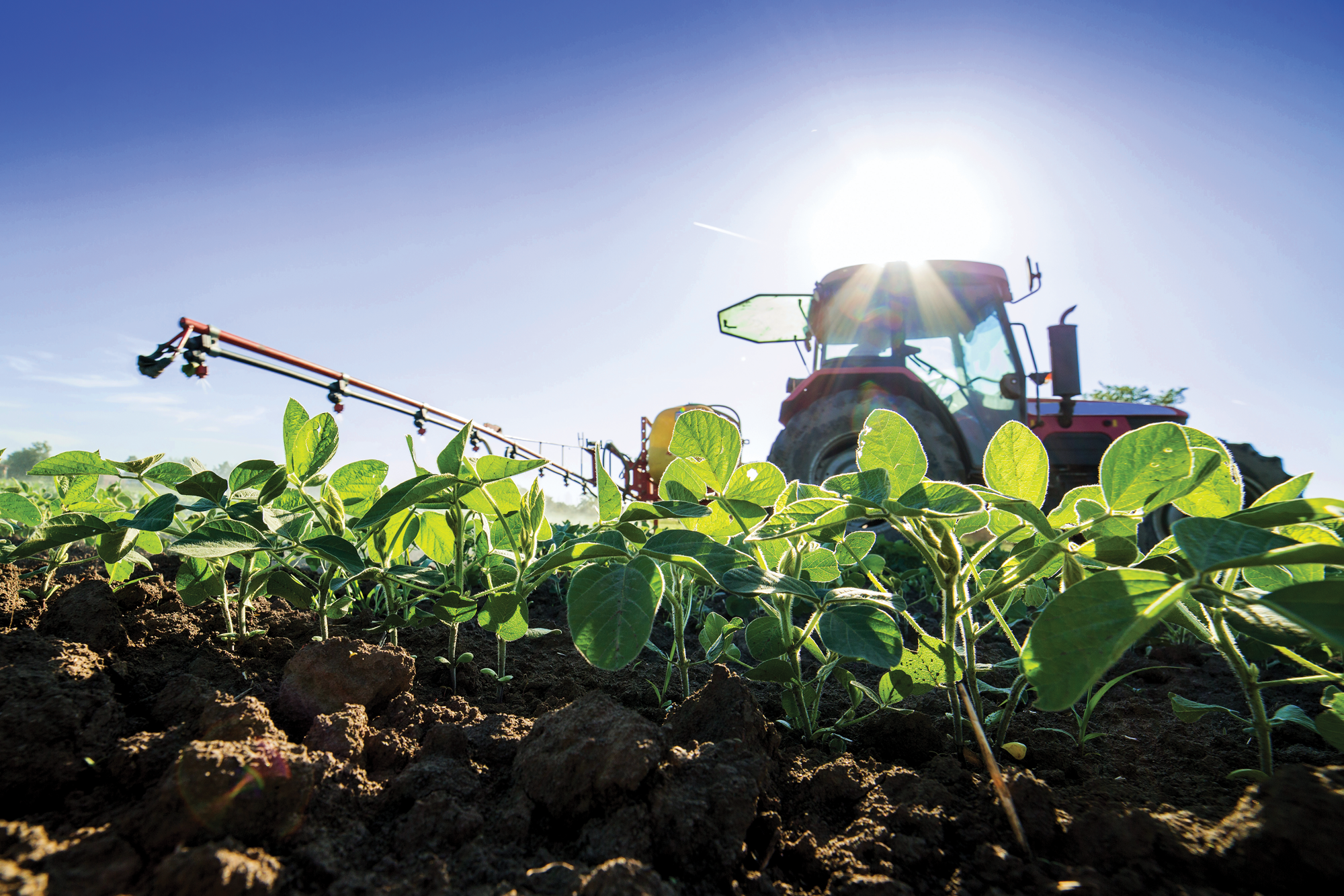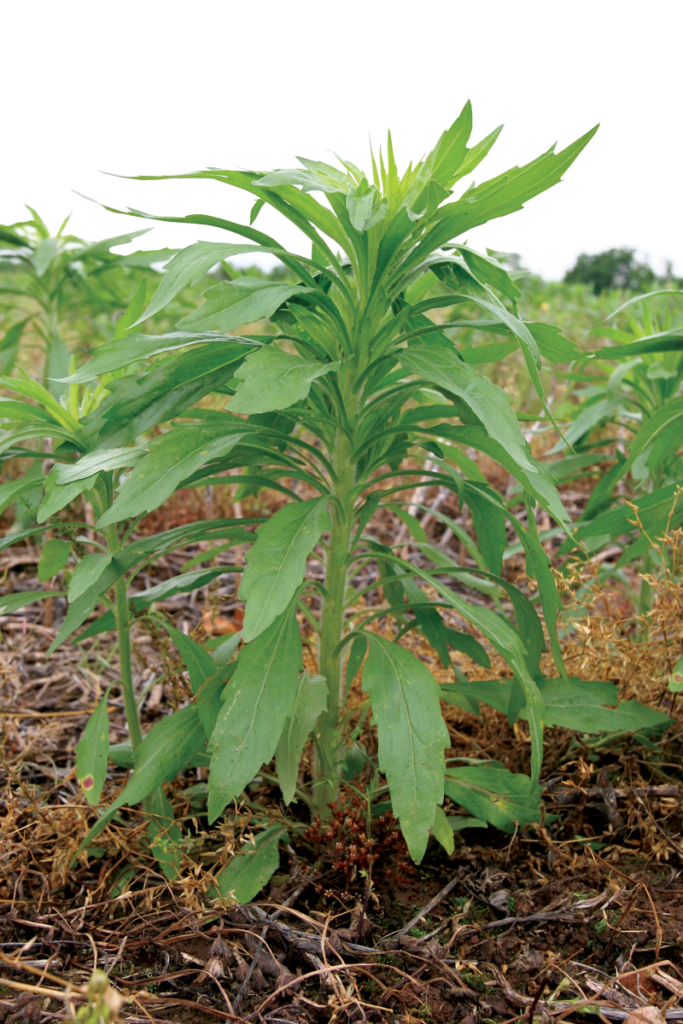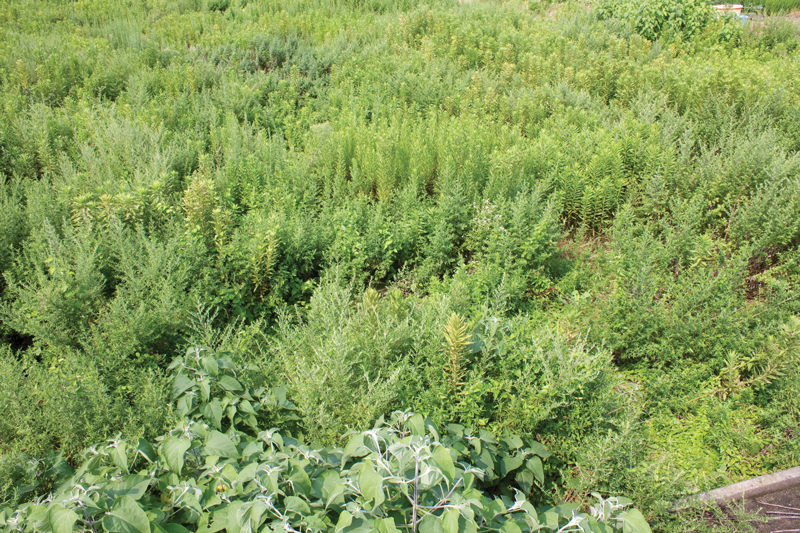
Are you ready for the weeds?
April 24, 2016
Written By Adam Buckallew
Benjamin Franklin once said, “By failing to prepare, you are preparing to fail.” I think that statement is appropriate for where we are with weed management right now in Missouri—if we don’t plan accordingly, the problems experienced in 2015 could lead to even greater problems this year. Last year more than 1.5 million acres of cropland were never planted as a result of the continually wet conditions experienced from April through July. Most of this acreage was left fallow without any sort of weed management program, and these fields grew up into weedy messes. These weeds matured and produced viable seed that, in most cases, were deposited back into the soil seedbank. The primary weed I observed in most of these fields was waterhemp, which produces about 300,000 to 500,000 seed per plant. I also saw plenty of fields infested with marestail (also known as horseweed or Conyza canadensis), ragweed species and grasses like giant foxtail and fall panicum—all of which are also capable of high seed production. In short, the number of weed seed sitting in the soil seedbank waiting to germinate and wreak havoc this year may be unlike anything we have ever experienced before. As Mr. Franklin put it, we must have a plan or we might suffer the consequences.

So where do you start? How can you be ready to tackle the potential problems that exist in your fields right now? In this article, I suggest a stepwise approach for selecting your soybean herbicide program for the 2016 season. But remember that herbicides should not be the only component of your weed management program—you have to think beyond herbicides for weed management, and this includes cultural control methods like narrow row spacings, optimum planting populations, crop rotation, cover crops and tillage where appropriate. These cultural control practices need to be combined with an effective herbicide program to achieve the best weed control possible.
First, plan to start weed-free this season with an effective tillage operation or burndown herbicide application. You cannot afford to plant into weeds that have not been adequately controlled or that are already emerged at the time of planting. This will put you behind the eight ball before you even begin, and you likely will never catch up. Another reason to start weed-free is there are too many resistant weed species that will not be controlled in-crop if they have emerged by the time of planting. We now have multiple herbicide resistances within numerous populations of marestail, giant ragweed and especially waterhemp. This essentially means there are little to no post-emergence herbicide options for the control of these weeds in Roundup Ready soybean.
Second, make sure to apply a full use rate of a pre-emergence residual herbicide that targets your most problematic weed species. For most Missouri producers, this means an effective herbicide for waterhemp. For waterhemp, some of the most effective pre-emergence residual herbicides include the group 14 herbicides such as those containing flumioxazin and sulfentrazone (Authority products, Envive, Fierce products, Sonic, Valor products, etc.) and the group 15 herbicides such as those containing metolachlor (Dual II Magnum, in Boundary, in Prefix, etc.), dimethenamid (Outlook, OpTill PRO), pyroxasulfone (Zidua, in Fierce, etc.), and acetochlor (Warrant, in Warrant Ultra). Trifluralin (Treflan, group 3) and metribuzin (Sencor, Tricor, etc., group 5) can also provide good waterhemp control. A key point here is you should apply a full use rate of whichever product you have chosen. Unfortunately, some pre-emergence herbicides still have a section on their label with information about reduced rates for use in Roundup Ready soybean systems. Usually this reduced rate is half that of the full use rate listed in a different section of the label. This makes no sense to me and is likely going to drive us toward more resistance problems in the future. If you have glyphosate-resistant waterhemp in your fields and know that glyphosate isn’t going to control this weed no matter what rate you use, what’s the rationale for applying a lower rate of a pre-emergence residual product that actually does control waterhemp? The bottom line is this: You need to make sure you do the best job you can upfront with pre-emergence herbicides, if for no other reason than our inability to successfully control waterhemp post-emergence in the majority of fields throughout the state.

Third, scout fields regularly after emergence and make timely applications of post-emergence herbicides to weed escapes. Simply put, there was a time when many farmers forgot about the importance of weed size because glyphosate controlled the weeds no matter the size. Now glyphosate does not control most of our driver weeds (waterhemp, marestail, giant ragweed, etc.), and I think everyone is in the process of “re-learning” that lesson. Group 14 (or PPO) herbicides like Cobra, Flexstar, Marvel, Phoenix, Ultra Blazer and others just simply will not provide adequate control of waterhemp greater than 4 inches in height at the time of application. The same is true of glufosinate (Liberty, group 10) in LibertyLink soybean. If you apply one of these herbicides to waterhemp greater than 4 inches in height and are not happy with the outcome, it is not necessarily because the weed is resistant; the products are not labeled for waterhemp that size in the first place. Another thing to think about when it comes to post-emergence applications of the group 14 herbicides and also Liberty is coverage is critical, and the spray application parameters that may be ideal for glyphosate are not usually the best for these contact herbicides. So higher gallonage per acre and nozzles that provide good coverage will be critical.
Fourth, “layered” or “overlapping residual” herbicide programs are insurance against late-season flushes of certain weeds and have proven to be an effective strategy for the management of waterhemp. If you are not familiar with this type of weed management strategy, it involves a pre-emergence residual herbicide before planting, followed by an in-crop application of another residual herbicide (Anthem, Cinch, Dual II Magnum, Outlook, Prefix, Warrant, Zidua, etc.), usually made at the same time as a glyphosate application in Roundup Ready soybean, or Liberty application in LibertyLink soybean. This herbicide strategy will not work on every weed species, but it does provide effective residual control of waterhemp and a variety of other small-seeded broadleaf weeds and grasses. More Missouri growers have adopted this herbicide program in recent years as a result of its effectiveness on waterhemp.
As mentioned previously, the most important thing is for you to have a plan. If you follow the four steps above, I believe you will be able to offset many of the consequences of the past season.
For more information on this topic and other weed-related issues facing Missouri producers, visit www.weedscience.missouri.edu or follow Mizzou Weed Science on Facebook and Twitter.

